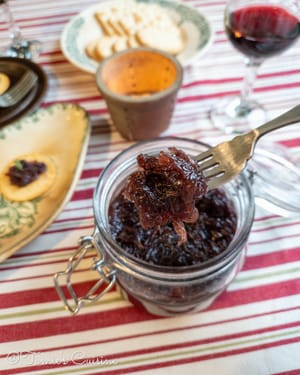In this post, I’m going to introduce this very helpful and delicious miso marinade. I use this marinade to marinate fish and other meat too. It makes the meat or fish even more tender and extends its shelf life. I used pork for this recipe, but you can use different meat, fish and even vegan options such as tofu.
I love making this to put in my lunch box. It goes well with rice and steamed vegetables. Not only that, but it makes you consume fermented food too!
How fermented foods help your body
Back when I was a kid, I was told that fermented foods are good for your health. In Japan, we have quite a lot of food with fermentation. For example:

There are a lot of fermented foods that we can get in London

- Yoghurt
- Cheese
- Kefir
- Kimchi
- Sauerkraut
- Tempe
- Kombucha
But how good are they? I am not 100% sure how it works, so let’s find out together. Most of the fermented foods contain lactobacillus. This bacteria produces lactic acid and helps remove harmful bacteria from the stomach. According to the TED talk titled “Why live culture fermented foods are good for your gut” by Kathryn Lukas, 90% of all disease begins in the guts.
Benefits of miso
Now we know that fermented foods may provide several health benefits to our body, but how does miso fare in all this?
Health benefits
Miso has an antioxidant effect thanks to its nutrients called “soy saponin” and “melanoidin”, which is the brown colour pigment in miso. The fat in our body is always oxidising, and it can cause various diseases, so these nutrients help counterbalance it.
Miso makes meats softer and keeps them away from germs.
I love to marinate fish and meat in miso because of the taste it gives, but it also makes them tender. After looking this up, it turns out that the enzyme and the miso’s pH makes them tenderer.
Miso is also a great ingredient to keep food away from germs. It’s because of its antioxidants effect and its amount of salt content. Antioxidants keep the fat being oxidated, and generally, harmful bacterias are weak against salt, and around 12% of salt content is enough to kill them. Therefore, harmful bacterias such as E.coli cannot increase their number and die slowly. Though do keep in mind that some bacterias may still survive.
(Marusan, Japanese soy product company, 2021 ) The link is in Japanese, but you can use Google Translate to read it.
Recipe
Ingredients

- 2 slice of pork shoulder steaks (about 1cm thick)
- 2 tablespoon of miso
- 2 tablespoon of Japanese sake (you can also use dry white wine as an alternative)
- 2 tablespoon of sugar (I used dates syrup. Honey goes well too.)
- Half tablespoon of sesame seeds (optional)
Instruction


- Place miso, sake and date syrup into a small bowl and whisk them until they combine. (check the taste and if you like a sweeter taste, add some sugar little by little.)




- Remove excess juice from the pork and place it in a Tupperware or silicone food bag.
- Put the miso marinade on the surface of the pork steak, then flip and put some on another side too.
- Marinate for 3 to 4 hours or overnight.
- If you have any marinade leftover, you can marinate fish or even tofu.




- Place the pork with marinade on a pan and start cooking at medium heat. It’s very easy to get burnt because of the miso, so cook gently at lower heat and place a lid on top.
- Once the side got nicely caramelised, flip the side. Cover the pan with a lid and cook.
- After about 3 minutes, it’s ready to serve.
I made the mistake of reducing the liquid, but it was too salty for my taste. Depending on your miso marinade, you can taste it and use it just like that as a sauce. - Serve with your favourite steamed vegetables. (asparagus, broccoli, cauliflower, potatoes, etc.) plus steamed rice. Yum!
- If you are using chopsticks, don’t forget to cut the meat before serving.
Closing words

That’s all for today! I hope this recipe using fermented ingredients can inspire you to try new recipes. If you do, please let us know on our Instagram, Pinterest, Facebook or email here!
Don’t forget to subscribe to our email list so that you don’t miss any of our future updates; we’ve got more recipes and eco-friendly tips coming up!





